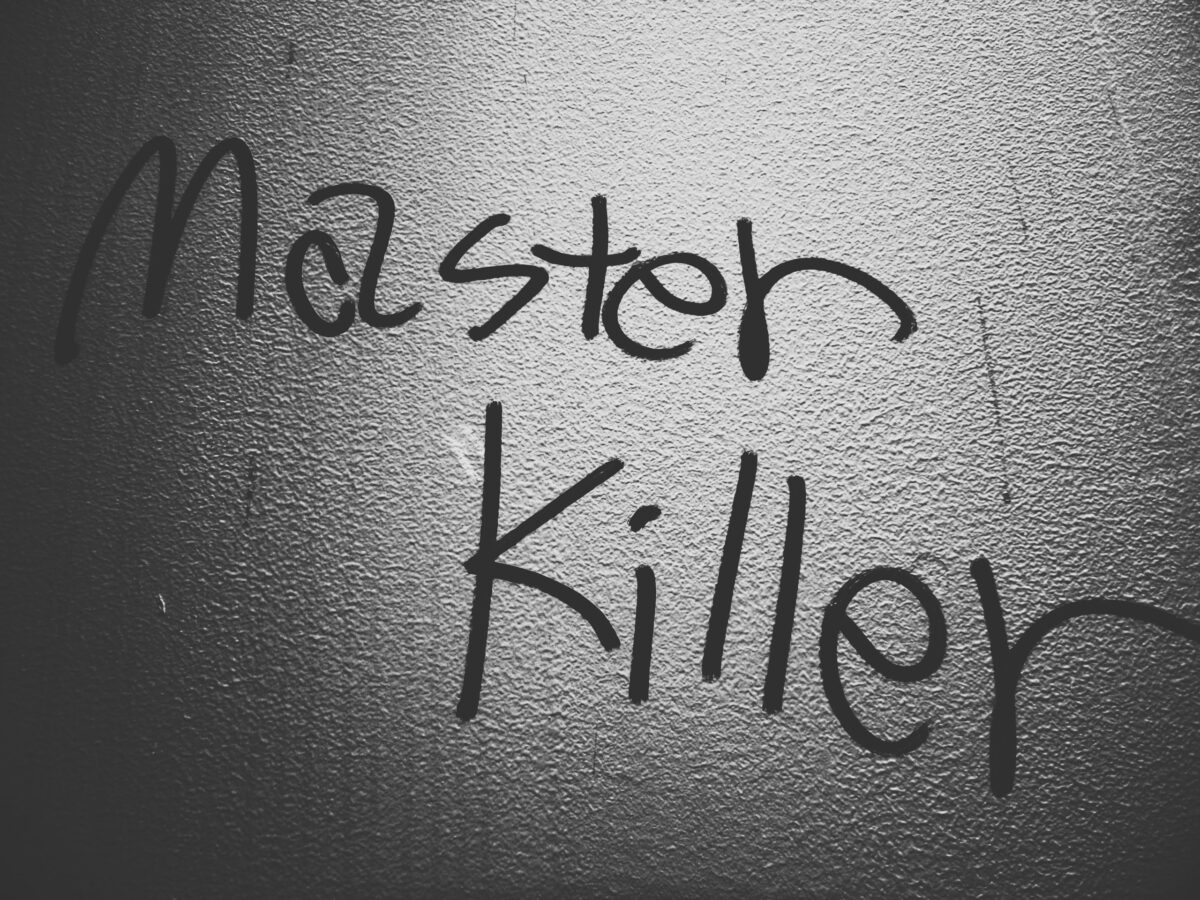No products in the cart.


As a #negotiator, #leverage can enhance your #negotiation efforts. But it can become a tool turned against you if you misuse it. Discover how you can use leverage to improve your negotiation outcomes. bit.ly/310PAHc




As one of the few experts who only preaches what I practice – and what has worked for hundreds of our clients – here’s the real deal on the 7 key strategies that need to be firing on all cylinders for your business to grow.
It’s about pie – more on that in a minute…
Questions I get from smart cookies like you all the time:
All these questions have their answers hidden in one of 7 key areas of your thought-leadership pie as a consultant, speaker, coach, author or independent professional…
Let’s explore each one – and see how you can tune, tweak, and improve anything that’s missing, not performing, or could use a major overhaul in YOUR business…
1. Speaking – obviously, this is our area of expertise. Having a solid speaker marketing strategy is vital to help you gain visibility in front of audiences who matter (aka buyers and decision-makers); generate leads for your back-end professional services; and generate significant revenue in paid professional speaking fees for your workshops, seminars, keynotes, trainings, workshops, and private events. Speaking is one of the most powerful lead-generators and revenue-generators in your expertise-driven business.
But how do you scale this above and beyond the audiences you can reach through live speaking? The next pie slice has your answer…
2. Online Courses – The most successful experts, speakers, consultants, and coaches are embracing the power of online courses, e-learning, and digital distribution methods for their expertise. The first benefit here is pure scalability – your business can reach thousands (or tens of thousands) of ideal customers, prospects, and buyers through the power of online courses. As a source of revenue, online courses are hard to beat because you create it once – and get paid over and over and over. This allows you to create a freedom-based business where your value is no longer tied to your personal time, attention, and presence. Jackpot!!
But now how do you reach those thousands of eager prospects, buyers, and decision-makers?
Let’s look at the next piece of the pie…
3. Webinars – The day I fully embraced webinar marketing back in 2012, my entire business – heck, my entire life – changed dramatically. We are living in an “Attention Economy” – meaning, when it comes to getting clients, you first need to earn their attention and only then do you get the chance to earn their money :o) The #1 best way to deliver massive value to your subscribers, fans, followers, prospects, and buyers is with content-rich webinars that teach actionable strategies, tactics, and tools. You need to be radically helpful and radically generous. This is what converts strangers to friends and friends to prospects and prospects to paying customers who love you, buy, repeat, recommend, and refer like crazy.
But webinars presented here and there sporadically and without a clear strategy are not going to do the trick. So you need…
4. Funnels – A marketing funnel is simply a fancy word for a programmatic sequence of touchpoints – emails, videos, blog posts, webinars, PDFs, and other helpful communications – delivered in a specific sequence to a specific subset of people specifically interested in a certain one of your products, services, or programs. A marketing funnel is your lifeline that keeps you connected to prospects who are at various phases of the buying cycle – from merely interested in the topic (browsers) all the way to committed to investing in your solutions/services (buyers). A well-designed marketing funnel will take a cold lead from initial contact to signed contract in a predetermined sequence designed to both add value, and extend offers and invitations to your relevant investable opportunities. Without a marketing funnel in place, you will never get off the “feast or famine” revenue roller coaster. And worse, you risk alienating people who are NOT interested in buying today while completely missing out on sales to the hot prospects who are ready to buy right now.
But what about long-term stability and predictable revenue? The best way to share your expertise and gain this benefit is…
5. Consulting/Coaching – Having longer-term engagements on your service menu – such as 90-day coaching packages or year-long consulting programs or monthly facilitated mastermind roundtables – is a great way to increase your impact on client results. Remember, people don’t really value transactions – but they VERY much value programs and services that deliver transformation. And delivering results over a sustained period of time is the best way to guarantee your clients’ success. Because of the greater depth, breadth, and duration of these engagements, it is much easier to get premium fees from premium clients who are deeply committed to the transformation you offer that will get them the results they truly want. These longer-term engagements also provide the foundation of your financial stability because the income is significant and ongoing.
But then how do you capture “lightning in a bottle” to let all the folks who can’t afford your consulting or coaching know you are the real-deal resource who can help them when they’re ready to transform?
6. Publishing – One of the best ways to do this is with publishing a nonfiction business book based on the expertise you already have. Writing, publishing, and promoting a business book that captures your methodology, training, and tools is an outstanding way to build your platform, expand your reach, and establish your authority as the “go-to” expert in your specific topic, niche, or industry. After all, you “wrote the book” on it so you must be a highly credible expert. And – some tough love coming up here – your book needs to be excellent. Not just good or very good, but truly great. It does NOT need to belong – in fact, the bestselling business books of all time are less than 120 pages in a small 5×7 trade publishing format. But just writing a book for the sake of having a book (and a crappy one at that) is definitely not going to help promote your expertise. That’s why the book needs to be marketed, launched, and sold for the long-term impact it can have on your professional success.
And what makes all of these components really take off? It’s about how you articulate and distinguish them with your messaging and packaging, which means you need to master…
7. Copywriting – Copywriting has nothing to do with patents, trademarks, and copyright notices ;o) “Copy” is written content conveyed through online media and print materials. Copywriting is one of the most essential elements of effective marketing and successful selling. It is the art and science of strategically delivering words (whether written or spoken) that get people to take some form of action. Good copy resonates with the reader and is relevant, valuable, attractive, and effective in communicating the value, impact, results, outcomes, and emotional payoffs tied to investing in and benefitting from your products, services, or programs. The better you are at copywriting, the more prospects, leads, and sales you will generate because you’ll be able to quickly get your prospects to “get it, need it, and want it” when considering buying from you.
Bam!! There you go.
If you want some guidance on how to put these exact pie slices together for YOUR business, check out https://www.expertprofitformula.com/


The world-wide Coronavirus pandemic has changed or is about to change virtually everyone’s life.
As we deal with this is a terrible situation it is important to keep in mind that innovation can be used to address many of the challenges the world is now facing.
Just like President John F. Kennedy’s commitment in 1961 to “land a man on the Moon, and return him safely to the Earth” ushered in a decade of incredible innovations, so can the fight against the Coronavirus and the preparation for future pandemics, provide mankind with tremendous innovative advances.
To get some perspective of the possibilities of innovations that might be developed in our current Coronavirus pandemic just look at some of the innovations that resulted from an “all hands on deck” effort to try to land a man on the Moon:
But, keep in mind the goal for true innovation should not just be the acceleration of current trends like online operations, hosted-environments, and the gig-economy, but truly new innovations.
The overarching objective for innovations should not just be to ameliorate short-term difficulties, but ones that address long-term challenges that will exist after the Coronavirus crisis.
To foster innovation in each of our lives we need to focus on the three foundations of innovation, which are:
What are these 9 different types of innovation?
Health experts have stated that there a two separate, but related Coronavirus crises.
First, the Coronavirus health pandemic itself and second the epidemic of loneliness and isolation being felt by people as a result of the “shelter in place” and social distancing guidelines being practiced by so much of the world.
In this newsletter, I would like to look at how innovation can be used to address the seclusion and lack of companionship challenges that we will face as long as it remains unwise to gather together.
To address this isolation, we have to create a virtual environment that can emotionally sustain and support people.
To do this we will need to see an eruption of creativity and innovation as people use technology to create a nurturing virtual ecosystem.
This creativity can evidence itself in two basic ways.
First, improving existing technology, such as ways to improve video chats and push critical information to cell phones. As we use the current tools there will be plenty of opportunities for seeing ways to improve them
Second, developing entirely new innovations. This involves going about your day and when the thought “I wish…” or “Wouldn’t it be a great idea if…” comes to mind, then come up with a solution that will address the issue.
Let’s begin by looking at some of the things people are doing already to survive.
In addition to the expected things where people are using smartphones and various forms of video chats to stay in touch with those who are physically distant, we are now seeing virtual yoga classes, virtual dance lessons, virtual church services, virtual dinner parties, that are not just one way, but involve interactive, two-way communication.
People are using Facebook groups to share information that assists neighbors in dealing with the current pandemic situation. Also, a group of public-school teachers, created a Google Doc to share ideas regarding how to teach students during state-ordered school closure.
Users have added innovations to multi-player online gaming platforms and people that can’t party in person have created “cloud clubbing,” which is a virtual party in which D.J.s stream music sets on apps like TikTok and Douyin.
Related to the entire area of virtual human interaction, the prior innovation of Social Media was supposed to improve humanity, but unfortunately, it was used by some persons and organizations to sow distrust and discord. Hopefully, the coronavirus crisis will cause people to come together and break down barriers, rather than erecting them – and there are early indications this is occurring.
A positive outcome from this crisis of isolation would be that the internet would be used to connect with each other, share information and resources, and develop solutions to the challenges that we will face for a while.
The desired outcome from these innovations is we create a virtual environment with is interactive, not just a passive one in which people just read or watch media because research has shown that people who use social media actively by messaging, participating in chats, and making comments are happier than those who are passive consumers of information on the internet.
While you encounter a problem or difficulty as you are practicing “sheltering in place” and following social distancing guidelines and you say to yourself “I wish…” or “Wouldn’t it be a great idea if…” remember to:
Hopefully the innovations you come up with not only address the current situation of loneliness and isolation but one that solves or addresses a long-term or overall challenge.
Also, keep in mind that there are 100’s of millions, perhaps billions of people experiencing the exact same difficulty as you are, so there is a huge potential market for your innovation
If you could use assistance with developing innovations as we are practicing “sheltering in place” and following social distancing guidelines, please contact us using the information below so we can be a resource to you in this important area.
Fountainhead Consulting Group, Inc. is an Innovation and Business Planning firm. During the past 17, years we have shown over 1,200 companies how to achieve their goals by using our unique, comprehensive, and systematic FastTrak Innovation Program™, Innovation Academy™, and Structure of Success™ methodologies. Using the components in these methodologies, each month we examine an aspect of how to transform your business or organization into a true 21st Century enterprise.
Office: (770) 642-4220
www.FountainheadConsultingGroup.com
George.Horrigan@FountainheadConsultingGroup.com

“Doubt can be a mental strangler that leads some people to become less than who they are.” -Greg Williams, The Master Negotiator & Body Language Expert (Click to Tweet)

“This Is How To Use Doubt To Win More Negotiations”
People don’t realize; they’re always negotiating.
“I’m not sure. If we use that in our negotiations, our real intent might create doubt about our seriousness. That could cause the other negotiators to act unpredictably. You’re right. That’s something we have to consider and plan for, but by having them doubtful about our intent, we’ll keep them off balance. Then, when the time is right, we can be more definitive about our actions.” You’ve just been privy to a conversation that occurred between two negotiators about the use of doubt in their negotiation.
Doubt creates uncertainty. It’s a tactical tool that every smart negotiator uses in negotiations. Thus, good negotiators use it deliberately to motivate the opposing negotiator mentally. Doubt is also the tool that’s used in everyday life to encourage people to adopt one action versus another.
Click here to continue, and you’ll discover how you can become a more persuasive negotiator by injecting doubt into your negotiations.
Remember, you’re always negotiating!
Listen to Greg’s podcast at https://c-suitenetwork.com/radio/shows/greg-williams-the-master-negotiator-and-body-language-expert-podcast/
After reading this article, what are you thinking? I’d like to know. Reach me at Greg@TheMasterNegotiator.com
To receive Greg’s free “Negotiation Tip of the Week” and the “Negotiation Insight” click here https://themasternegotiator.com/greg-williams/


Ready for some major motivation to kick butt, take names, and chew gum?
Here are the 11 questions you need to answer:
What you need is a healthy dose of reality from those 11 answers – and we’re here to help.
So let us help you launch – or grow – your expertise-based business as a consultant, trainer, coach, speaker, information marketer, or course creator: https://www.expertprofitformula.com/


Did you grow a business from scratch to point of needing employees? Or you may have risen through the ranks to become responsible for the work of others. In either case, you’ve had to learn to delegate responsibility.
You might be thinking about writing a book. It would boost your company’s credibility and be an effective form of marketing your business. Should you write it?
Here’s another possibility. As you’ve delegated many critical responsibilities to your employees, you can also delegate the responsibility of writing a book. Why may this technique be the best solution?
How Good Are Your Writing Abilities?
I once dropped a ring in the sink. My husband took apart the little S-shaped pipe under the sink and couldn’t put it back together. We hired a plumber to fix the problem I created and my husband made worse. I learned that using an expert instead of getting involved in an area where I have no expertise saves time and money.
I thought about that incident this year when I interviewed an author who said, “If you think it’s expensive to hire an expert, think about how expensive it is to hire an amateur.”
When it comes to writing a book, the amateur you hire may be you. The ghostwriter is the expert.
How Much Time Do You Have?
Some people who love statistics have figured out the time involved in writing a 120-page book, which is a common length in these times of diminishing attention spans. If you’re a good writer, it will probably take you an hour per page, or 120 hours. Do you have 120 free hours in your schedule?
You may think that 120 hours isn’t such a problem. Ask yourself, though, how you could use that time to build your business, market your products, and implement new and cutting-edge procedures. How can you best spend your time?
Is It Cheating?
Do you think you’re cheating if you don’t write it yourself? Celebrities and national and world leaders don’t share this belief. Some of the most significant and bestselling books were ghostwritten. A skilled ghostwriter can write your book in your voice. You might think of one as an actor who, instead of delivering the words of a playwright or scriptwriter, delivers your thoughts, experiences, and message.
What About Ego Gratification?
No matter who writes your story, it’s still your story. You will tell that story to the ghostwriter, probably in a series of recorded interviews. She will come to know and understand you. The ghostwriter will take your words and organize and write them in a way that makes them flow and have a greater impact on the reader.
And that’s what you want. Let’s return to the why of your book. You want to create positive publicity for your business and/or for your ideas about business in general. In these times, when change is taking place on all levels of society, you want your ideas to help cause positive change.
Your book can help to do that, and given the rapid nature of change today, the sooner it gets out there, the better. Unless you love writing and are proficient at it, and unless you have lots of free writing time, hire a ghostwriter. You’ll have the gratification of seeing your book in print and knowing that it’s a fluent and cohesive expression of what you know.
Pat serves business leaders as a ghostwriter. Connect with her at patiyer.com.


Negativity.
Pessimism.
Sadness.
Cynicism.
Enough already.
Acknowledge the current hard reality and uncertain conditions we’re all working under?
Sure – yes – please.
It’s important.
We’re not delusional and we’re not in denial.
Things are bad.
AND they’re going to get better.
And they’ll get a whole lot better, a whole lot sooner if you…
Refocus on your gratitude.
Reboot your enthusiasm.
Reimagine your future.
Redraw your plans.
Reinvent your business.
Reignite your team.
Restart your entrepreneurial engines.
Reconnect with family and friends
Rekindle your joy.
Rediscover why you started this crazy, wonderful, amazing business to begin with.
And then…
Begin again.
Be radically generous and radically helpful.
With purpose, heart, and the spirit of serving others.
Go, go, go!!!


This week a Phase 3 clinical trial of the very promising COVID-19 vaccine known as mRNA-1273 began.
The vaccine, which was co-developed by the U.S. biotechnology company Moderna, Inc., and the National Institute of Allergy and Infectious Diseases (NIAID), will involve approximately 30,000 adult volunteers who do not have COVID-19.
The “mRNA” stands for “messenger RNA,” and RNA is short for Ribonucleic acid, which is a polymeric molecule essential in various biological roles in coding, decoding, regulation, and expression of genes. Both RNA and DNA are nucleic acids.
The mRNA-1273 vaccine signals the body’s cells to create a virus protein that hopefully will elicit an effective immune response in the patient.
Coronaviruses like COVID-19 are spherical and have spikes protruding from their surface, giving the particles a crown-like appearance. Kind of like how “stick tight” weeds adhere to your clothing, these spikes bind to human cells, allowing the virus to gain entry. Therefore, the vaccine was developed to target the spikes.
Knowledge gained from prior studies of viruses related to COVID-19 [which cause severe acute respiratory syndrome (SARS) and Middle East respiratory syndrome (MERS)] allowed both Moderna, Inc., and NIAID to fast track the development of the vaccine – as is shown by the below lightning-quick timeline:
1/11/2020 – Chinese authorities published the genetic sequence of COVID-19
1/13/2020 – Moderna’s and the NIH/ NIAID infectious disease research team finalized the sequence for mRNA-1273, and Moderna began to mobilize for production
2/7/2020 – The first clinical vaccine batch was completed and underwent analytical testing
2/24/2020 – The vaccine was shipped to NIH/ NIAID
3/16/2020 – Phase 1 trial of mRNA-1273 begins
5/29/2020 – Phase 2 trial of mRNA-1273 begins
7/27/2020 – Phase 3 trial of mRNA-1273 begins
There are three keys that enabled this unprecedented innovation development timeframe.
Moderna used and built upon their expertise in advanced messenger RNA (mRNA) science to create a medication that was designed to elicit the body’s own cells to produce proteins that can result in the arresting of the COVID-19 virus.
Tal Zaks, Moderna’s chief medical officer stated that if the Phase 3 trial is successful the company will continue to use its knowledge in mRNA science, delivery technology, and manufacturing to provide the vaccine to the public on a large scale.
Just like Moderna understood and applied their expertise to try to solve the COVID-19 challenge, any company needs to assess its strengths with regards to innovation and play to those.
To be successful with innovation a company should perform an assessment to determine its core competencies. This includes identifying the unique capabilities of the business that could be leveraged to advantage in other markets, applications, and sectors. The goal is to work from an organization’s strengths and base of knowledge instead of starting from zero in an entirely new market about which nothing is known.
This is exactly what Corning did when it leveraged its knowledge in glass and related materials to create a product used for flat LCD displays (for cell phones initially, then laptops and desktop monitors, and lastly for LCD TVs and larger displays). This type of thinking led to major innovations that were developed in each of Corning’s business sectors, including the creation of four new product lines. These efforts turned the company around from having loses to huge profits.
Obviously, the development of the mRNA-1273 vaccine was a huge project that required collaboration between Moderna, Inc., the National Institute of Allergy and Infectious Diseases, clinical trial resources, and many others.
If the Phase 3 trial is successful, cooperation and coordination with regulators, policymakers, investors, public health organizations, and governmental organization will be required for the commercialization of the vaccine. All of these are outside Moderna, so a collaboration mindset needed to be present throughout the project.
Likewise, keep in mind that for large innovation projects, you may need to collaborate with people, resources, and organizations outside your company.
Our company, Fountainhead Consulting Group, Inc., has several clients in the pharmaceutical industry and in discussing the development of the mRNA-1273 vaccine with them they shared it would have required expertise from the following areas:
This means a true team approach would have been used by Moderna in executing this project. This concept is described as the creation of an Innovation Team.
Numerous studies have shown that for innovation to be successful, it is imperative to utilize teams comprised of individuals with diverse backgrounds. What’s more, noted innovation experts like Clayton Christensen stress that the 21st-century approach to innovation necessitates working in teams.
The utilization of cross functional/cross-departmental teams is an absolute key to bringing ideas to market, but how does one go about selecting the best team members for effectively developing innovations?
A study by Mills and Cameron found that curiosity and persistent interest are two of the best attributes to look for in choosing creative team members.
Other studies have revealed that team participants should also be selected on expertise, knowledge acquired through work activities, creative traits, and the ability to develop original and novel solutions to problems.
Research by Shalley and Oldham indicated that creating competition among groups that were comprised of skilled team members can enhance creativity, motivation, and innovation. Therefore, giving the same innovation assignment to two or more groups may be advantageous.
Applying This to Your Company or Organization
To ensure a successful outcome from any large innovation project, make sure to put in place the following three foundations.
First, perform an assessment to determine your core competencies and unique capabilities that can be leveraged to advantage in other markets, applications, and sectors. The goal is to work from an organization’s strengths and base of knowledge instead of starting from zero in an entirely new market about which nothing is known.
Second, keep in mind that for large innovation projects you may need to collaborate with people, resources, and organizations outside your company. So plan accordingly and establish those relationships.
Third, utilize cross functional/cross-departmental Innovation Teams comprised of members with diverse backgrounds. Choose individuals based upon their expertise, knowledge, curiosity, and mindset.
If you could use assistance with effectively applying these three innovation foundations in your company or organization, please contact us using the information below so we can be a resource to you in this crucial area.
Fountainhead Consulting Group, Inc. is an Innovation and Business Planning firm. During the past 17, years we have shown over 1,200 companies how to achieve their goals by using our unique, comprehensive, and systematic FastTrak Innovation Program™, Innovation Academy™, and Structure of Success™ methodologies. Using the components in these methodologies, each month we examine an aspect of how to transform your business or organization into a true 21st Century enterprise.
Office: (770) 642-4220
www.FountainheadConsultingGroup.com
George.Horrigan@FountainheadConsultingGroup.com


What does my focused mind like to do?
Five things:
1. Sell stuff
2. Help our clients sell stuff
3. Record videos about selling stuff
4. Talk to my smart friends about how THEY sell stuff
5. Make up funny titles for your enjoyment :o)
Here’s what made me think of this:
WTF = Wants To Fail.
Who in the world wants to fail?
Here’s what I mean…
Are you already successful? Good!
By all accounts, including your bank account, you may be ‘successful.’
But it’s very possible that the brand of success that you created has a price which can best be described with the saying, “Nothing fails like Success!”
Imagine yourself after your initial success…
Speaking 50+ dates a year at good fees; coaching dozens of senior executives a month; selling 10-15,000 books under your own steam; consulting and running seminars for your roster of Fortune 500 clients…
BUT today…
You are working way too hard…
And there’s no time to market your services, develop new products, write more books, or live your life!
After reaching your initial success, you’re now trapped by it!
If you see that, but don’t DO something about it – well then you Want To Fail
That’s one flavor of WTF…
Here are 6 more…
But before we even get to that, for those of you that this particular article resonates with – let’s help you reboot, reignite, and reimagine your business for its next level of success.
1. Won’t Try Failing – if you’re not willing to try new things (and fail at some of them), you’ll never dial in your success ingredients or get different results
2. Whines Too Frequently – self-explanatory (I hope!)
3. Will Too Flaccid – you need an iron will and a crystal clear vision of where you’d like your business to GO in order to get there via the shortest, surest, quickest path
4. Worse Than Failure – the only thing worse than failure is giving up on your dream before you ever get the chance to succeed
5. Wait Til Friday – procrastination, delay, and denial are not the path that will get you to ANY worthwhile destination. No more waiting. Now is your time!
6. Whatever That’s Fine – settling for whatever business falls in your lap or whatever referrals you occasionally get isn’t a survival nor a growth plan – it’s an abdication of your entrepreneurial dream.
Don’t settle.
Don’t wait.
Our time is shorter than we think.
It’s game time – you’re primed – you’re pumped – you’re ready.
Let’s DO THIS.


As the screeching train whistle continuously shrilled in the distance, the people that heard it knew it was a warning about a problem. As the train grew closer, one individual that caught the sounds of the howling whistle said to another, this sounds like it might be a killer situation.
In negotiations, the train could be a symbol of a powerful force coming at you. The whistle could be the warning of imminent danger in the negotiation. And both could be signals that alert you to a killer situation looming close by. Do you pay attention to such signs when you’re negotiating? And if you do, do you prepare ahead of time for how you’ll address them? If not, how quick are you to switch to either a defensive position or one that might require you to go to a more potent offense? Those are vital questions that you must either have answers for or be prepared to address. Because, if you’re unable to do either, a killer problem could quickly kill your negotiation.
Many #problems can #kill your #negotiations, and they can hide in plain sight. But you can avoid them. Discover how you can prevent killer situations from wrecking your negotiations. Click here to continue —>>> https://bit.ly/3gCBKQP
Remember, you’re always negotiating!
Listen to Greg’s podcast at https://c-suitenetwork.com/radio/shows/greg-williams-the-master-negotiator-and-body-language-expert-podcast/
After reading this article, what are you thinking? I’d like to know. Reach me at Greg@TheMasterNegotiator.com
To receive Greg’s free “Negotiation Tip of the Week” and the “Negotiation Insight” click here https://themasternegotiator.com/greg-williams/